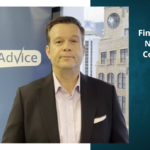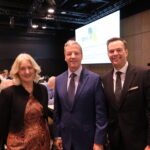Knowing where you are financially, where you want to be, and how to get there: that’s the 101 of Financial Planning. And as well as giving you a roadmap to your financial future – lifestyle, security, and goals that you aspire to – Financial Planning is a powerful tool in building your financial resilience.
We hope you find this quick summary a useful ‘thought-starter’. And of course, if you’d like to have a more detailed conversation specific to your personal needs, we welcome you to browse our member directory for a financial planning adviser near you.
Financial planning is a little like plotting a route on a map. First you have to know where you are – X marks the spot – and where you want to be; and only then you can work out the best roads to take.
So where to start?
Locating X
A good financial plan starts with absolute clarity about where you are today. Dive into the numbers and do a ‘stock-take’ on your financial position. For example: the debt you’re carrying; the assets you own; savings, investments and income etc. Sounds like a bit of work, and it is. But being as detailed as you can about all aspects of your finances is key: after-all, it’s tricky to plan the best route if you only guess at your current location.
Destination ‘Me’
Hard work done and location X found, now it’s time to think about where you want to be. Don’t shy away from ‘thinking big’. It’s an opportunity to ponder what you want out of life. Start by jotting down your goals. Remember to be pragmatic and aspirational, and think about both emotional and financial milestones, for example:
I want to pay off debt
I want to be able to travel more
I want pay off my mortgage in X years
I want to buy my first home next year
I want to make sure my loved-ones are protected
I need to save $ for retirement by [date], and another $ by {date]
I want to have a healthy ‘rainy-day’ fund just-in-case
I want to retire early
I want the kind of financial security that gives me freedom and choice.
Your goals will be entirely personal to you: that’s the beauty of financial planning – it really is an opportunity to take a step back from the busyness of life, and take a good look at what’s important to you. Enjoy this stage – and don’t rush it.
Prioritising for focus
Once you have your list of goals, it’s time to prioritise and timeline. As the saying goes, ‘money doesn’t grow on trees’ and as with all things in life, you’ll need to make some decisions. For example: (1) the goals that are most important; and (2) the and goals that you need to focus on in the short-term, medium-term and longer-term.
Planning the route
Now for the ‘how’. To achieve your goals in the timeframes you’ve determined, what needs to happen?
Depending on what you want to achieve, your route to Destination ‘Me’ could include a range of actions, from day-to-day changes like adjusting spending and saving habits, to using financial tools like investments and insurance, or previously untapped features of your mortgage like extra or lump-sum repayments etc.
At all stages of financial planning – and particularly when you’re working out the ‘how’ – it’s helpful to have the guidance of an expert.
You might like to have a conversation with a financial planning adviser – they can help you assess your current financial position; articulate, prioritise and timeline your goals; and ensure that you are aware of the various actions and financial options that are best suited to helping you arrive at Destination ‘Me’.
And, perhaps most importantly, they’re there to help you stay on track and adjust the route should your life and goals change. It’s a journey after-all.
Please note that the content provided in this article is intended as an overview and as general information only. Please use your discretion and seek advice before making any decisions based on the information provided in this article.








